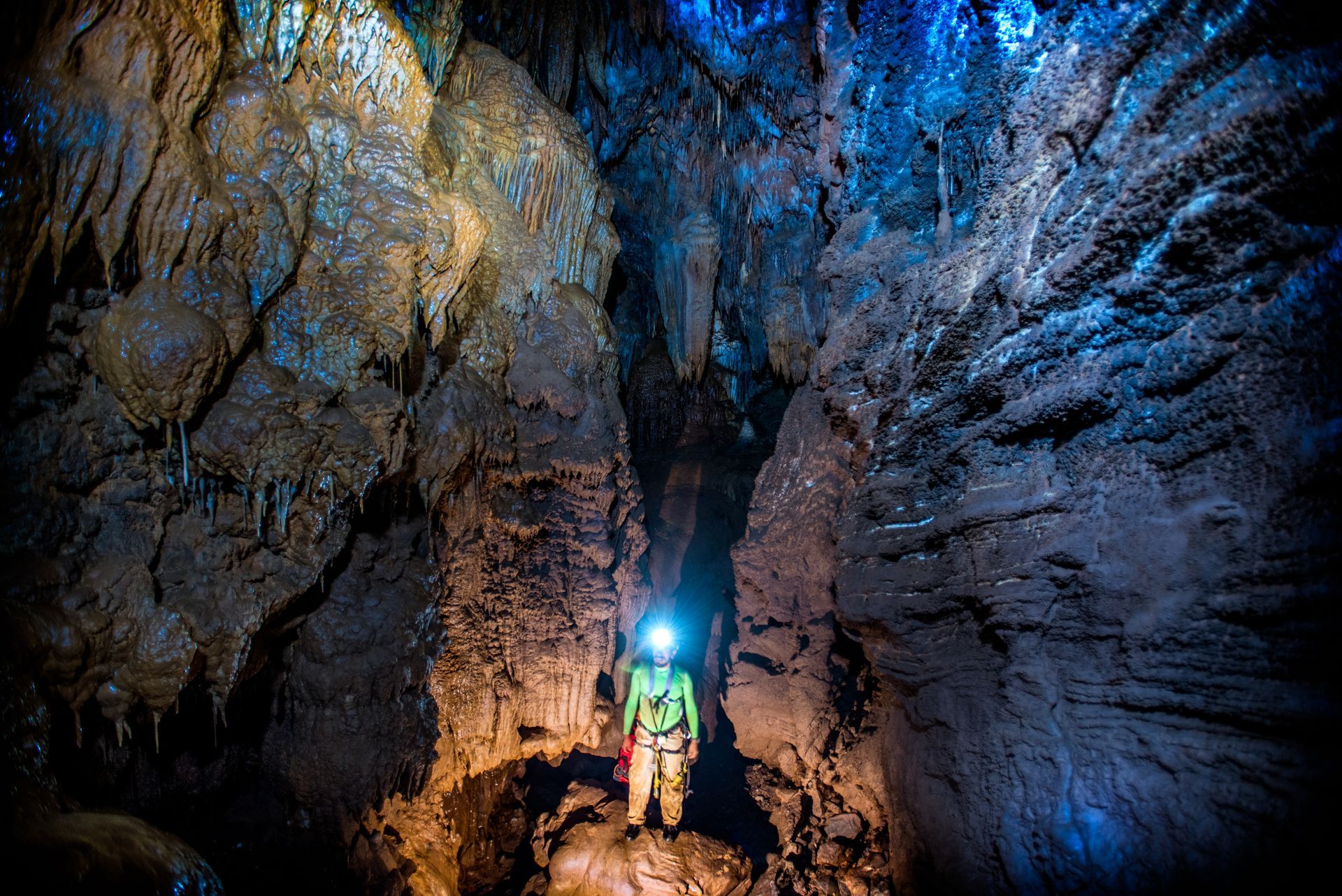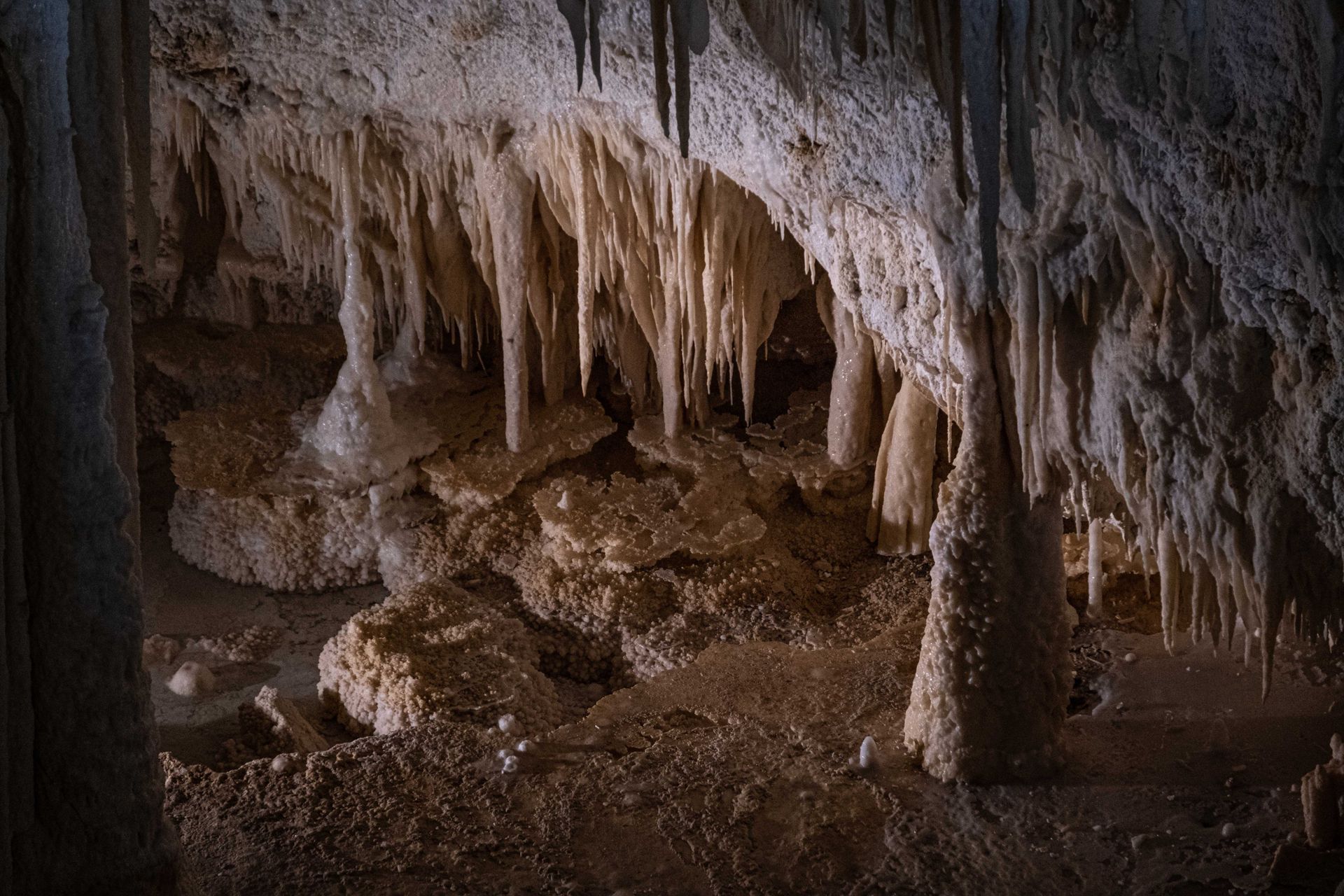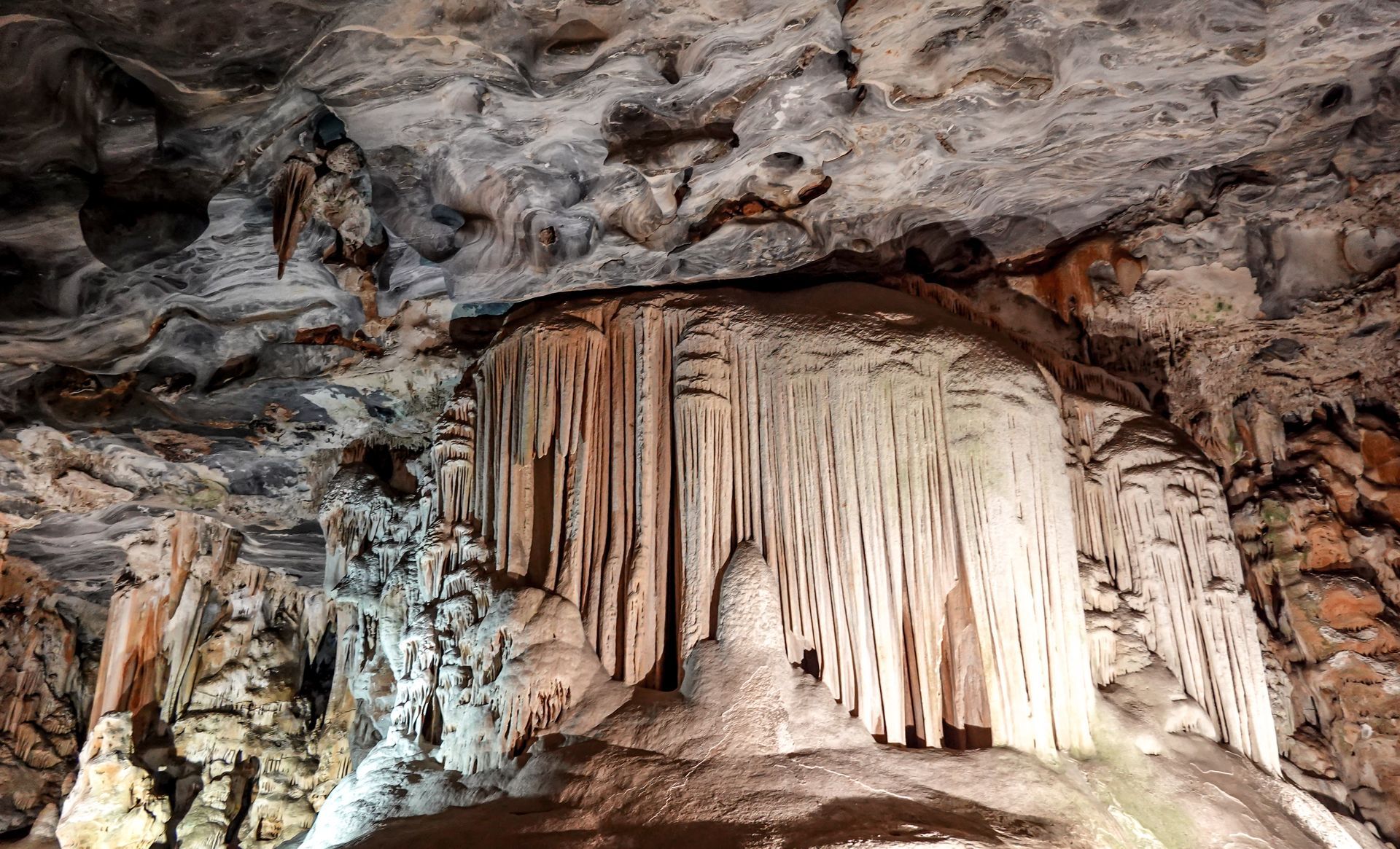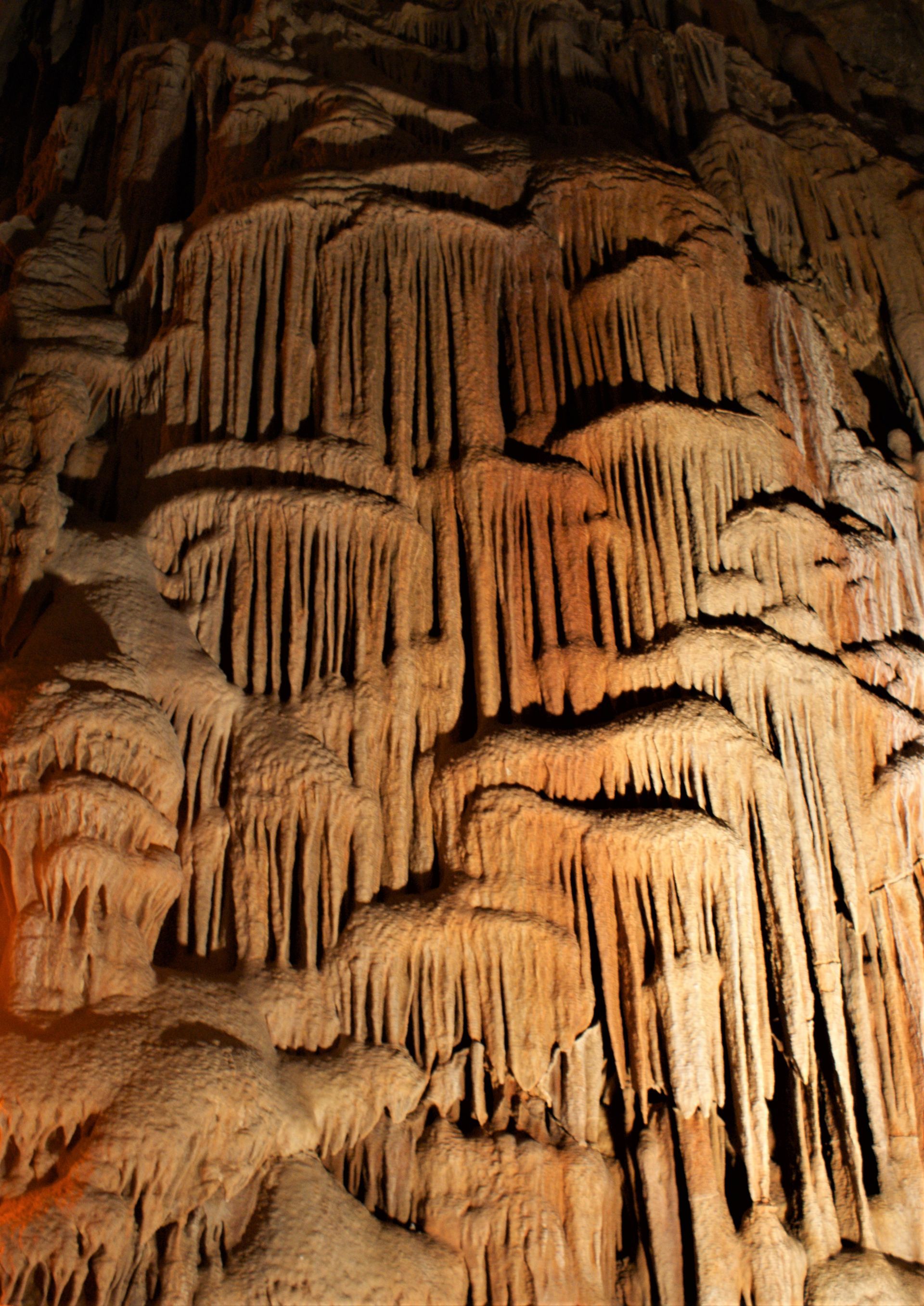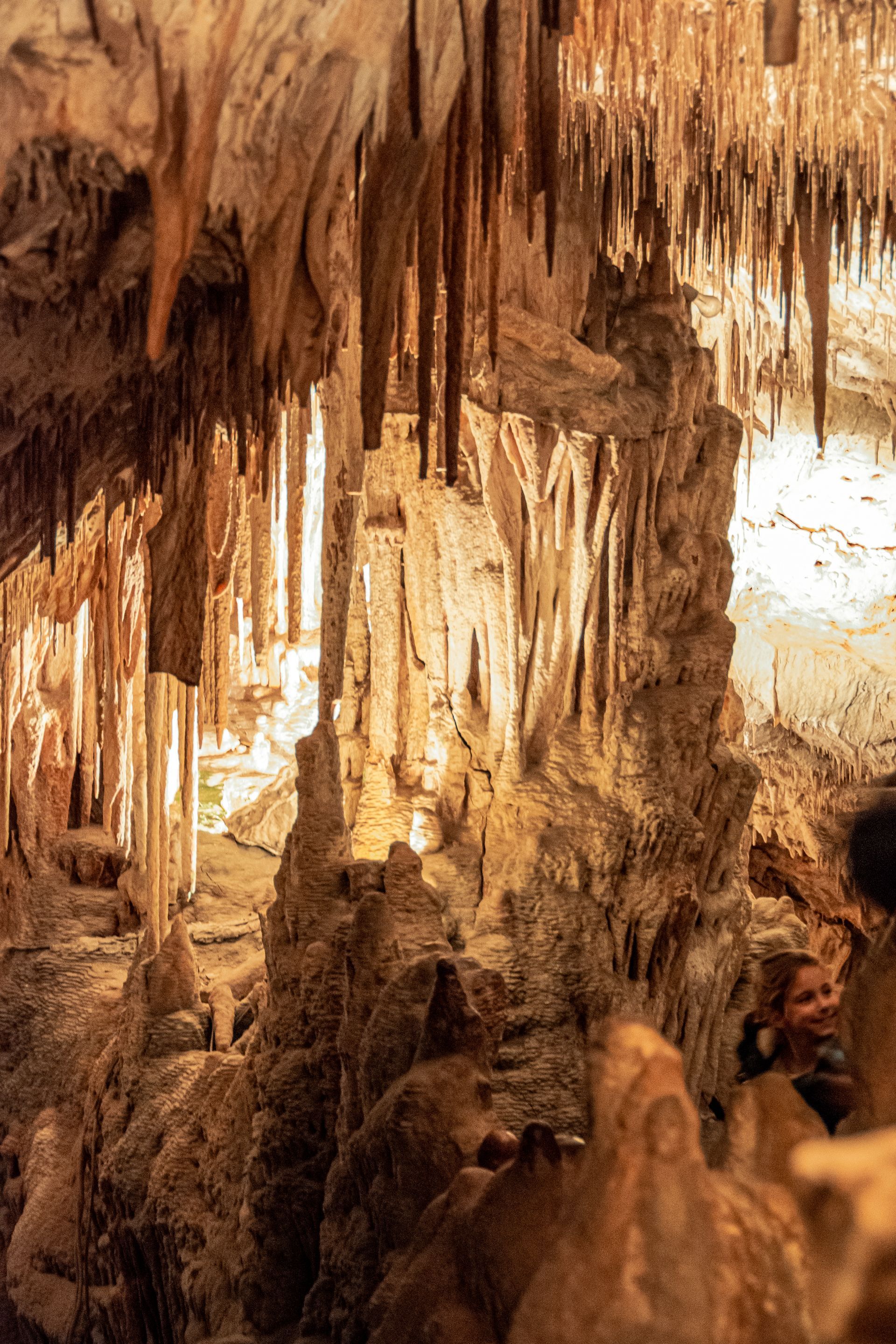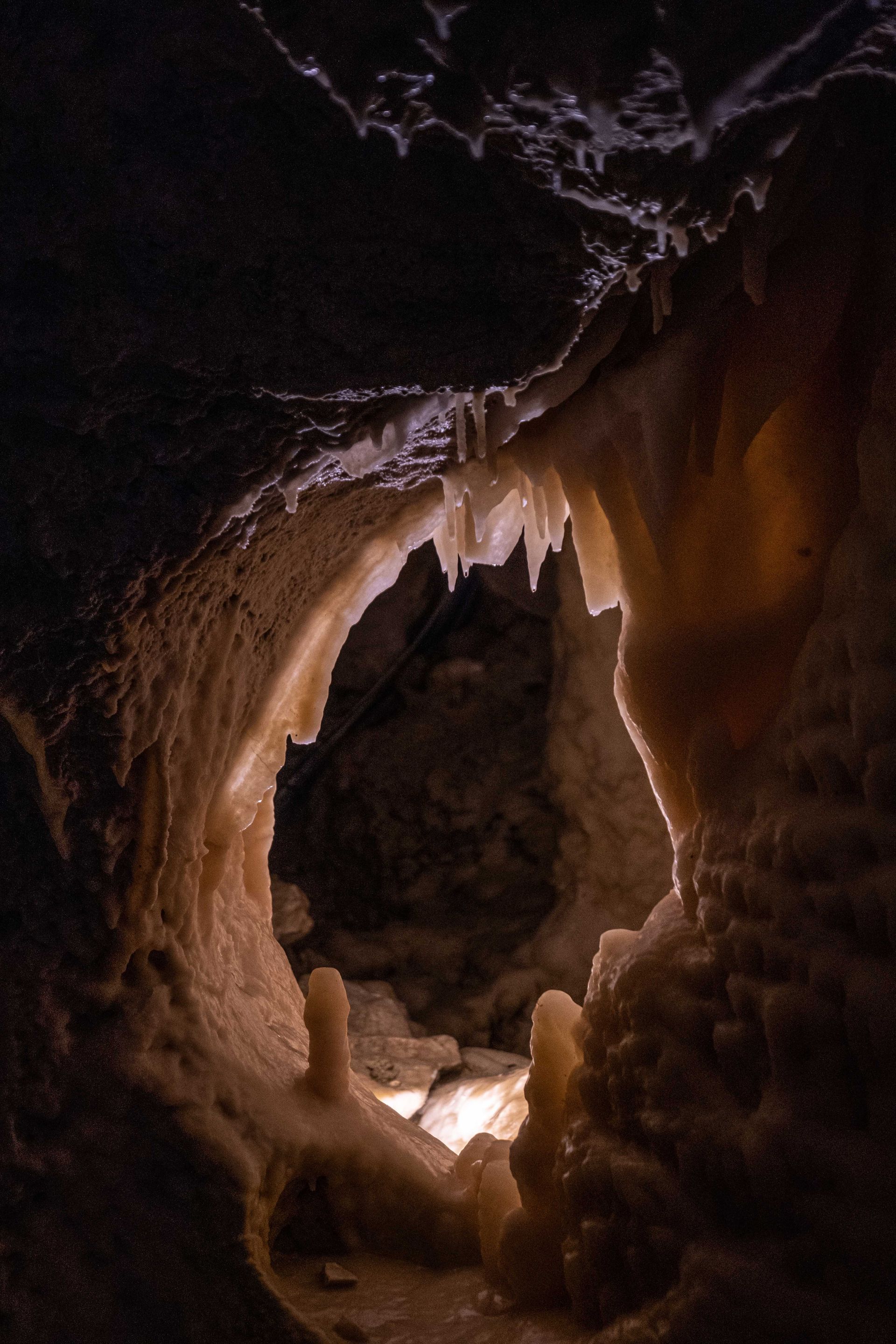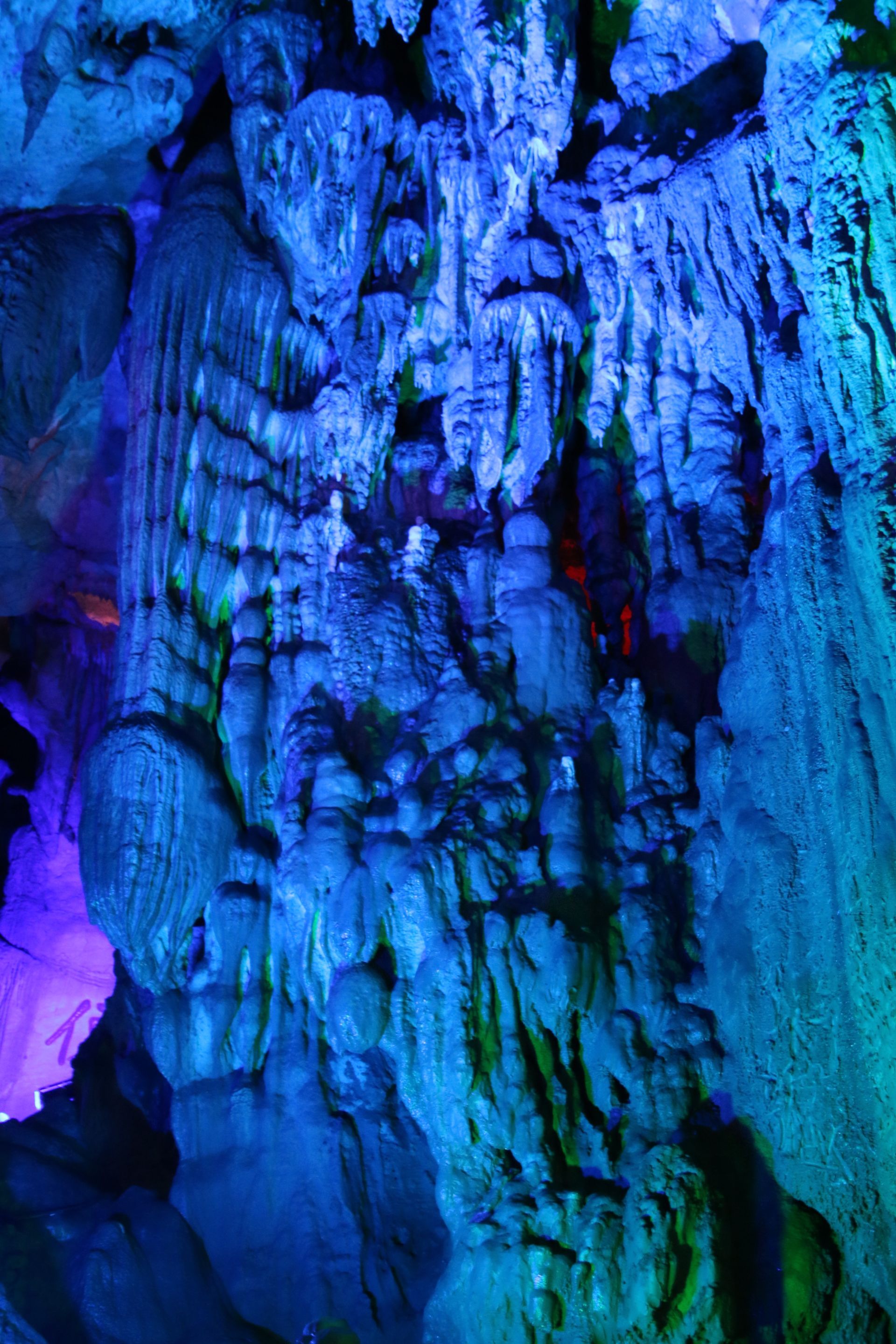The history of our caves
Hop in our time machine and explore the 300-million-year history of Stump Cross Caverns.
Did you know…?
Reindeer Cavern got its name because explorers found prehistoric reindeer bones there. Discoveries like these are invaluable for scientists studying the Earth's distant past.
Year 2000
Reindeer Cavern opens to the public.
Forty-five years after its discovery, Reindeer Cavern was opened to the public.
Its first explorers were faced with mud, boulders, muddy boulders and more mud – but these were cleared out to make way for visitors in the run-up to the millennium.
When you visit Reindeer Cavern, take a look at the columns, curtains, stalactites and stalagmites – all lit up and sparkling like a Stone Age Christmas tree.
Did you know…?
Geoff cooked himself a special meal in the caves when he broke the world record. The menu included creamed mashed potato, mushroom soup and strawberry jelly.
He also made two toasts – "to Queen and country" and "to speleologists"!
Year 1963
Geoff Workman breaks a world record.
Stump Cross Caverns isn't just a splendid show cave – it's also the site of a world record.
Yes, in 1963 local caving enthusiast Geoff Workman spent 105 days underground in complete isolation. In doing so, he became a record-breaker.
Taking with him camping gear, scientific equipment and – most importantly – food, Geoff began his subterranean sojourn in June 1963 and reemerged to world acclaim at the end of September.
It was no holiday for Geoff. He was studying the effects of isolation on the human body, as well as photographing and surveying the caves. It was this programme of work, he says, which stopped him from being bored or lonely.
Year 1922
Further explorations.
Christopher Long was a student of medicine at Cambridge – but his real passion was the same as ours. He loved nothing more than to rave about rocks – and it's thanks to him that new chambers were discovered.
Together with some Cambridge caving chums, he spent his Easter holiday in 1922 digging, digging and digging. They dug for 168 hours – without breaks, that's the length of a week! They found around 450 metres of passageways, chambers and grottoes, festooned with stalactites. They also dug up prehistoric remains, including those of reindeer and wolverines.
Legend has it that Long also discovered an underground lake. He took his discovery to the owner, who refused to make a deal with him. Allegedly, Long responded by filling up the entrance to the lake. People are still looking for it to this day!
Year 1860
A quote from the time…
"In January, 1860, the Yorkshire Mining Company discovered at Stump Cross, near Pateley Bridge, at the depth of nine fathoms, some very extensive caverns, embellished with stalactites and stalagmites, of great brilliancy, specimens of which have been eagerly sought after.
"Some of the cavities are as large as good-sized rooms, and are described as having the appearance of a palace of jewels, the rarity and brilliancy of which are beyond description."
Post Office Directory of the West Riding of Yorkshire with the City of York, 1861 edition
An amazing discovery
Not much happened at Stump Cross for the next few million years. The caverns lay undisturbed and undiscovered, far below the surface.
That was until one fateful day in 1860 when two intrepid lead miners made Yorkshire history.
William and Mark Newbould weren't expecting to stumble upon Stump Cross. They were doing what they did most days – looking for valuable lead deposits to sell.
But when they broke through a hollow-sounding section of tunnel, they found something far more precious – a pristine network of natural caverns, decked out with incredible rock formations. Imagine the looks on their faces!
The Newboulds had noted the success of other show caves in Britain. With a shrewd eye for business, they approached landowner Thomas Yorke and negotiated a lease. This was the beginning of Stump Cross Caverns as a local attraction.
Stalactites and stalagmites form
500,000 years ago
Have you ever seen a stalactite?
These tall rock structures have a strange, uncanny beauty. In fact, they almost look like they've come from another planet!
Stump Cross has loads of stalactites, as well as stalagmites (their upside-down counterparts). But they didn't form overnight. Far from it.
See, as rainwater dribbles through the soil and rocks of the Yorkshire Dales, it picks up tiny crystals of calcite – the same mineral that limestone is made of.
As the rainwater reaches the caverns, it turns into droplets that fall from the floor to the ceiling. And each time it drips, it deposits a microscopic amount of calcite.
And so it went – drip, drip, drip – for many thousands of years. Eventually, those teensy calcite deposits grew into the smooth, otherworldy stalagmites and stalactites you see today.
The birth of the caverns
Over 500,000 years ago
At first, the layers of limestone were laid flat like paving slabs. But as the Earth shifted, the rocks started to crumble and distort. Some broke apart and formed large chasms, while others developed small cracks called joints.
Every time it rained, these cracks filled with water. Over thousands of years, the water wore away the rock and widened the cracks. The widest cracks turned into underground streams.
When the water eventually disappeared, it left behind vast underground caverns. Stump Cross was born.
Did you know…?
If you visited the Yorkshire Dales 300 million years ago, you'd find yourself thousands of miles away from the region we call Yorkshire today.
Back then, all the continents were squished together in a giant landmass called Pangaea. Prehistoric Britain was nestled between Greenland and France, somewhere close to the Earth's equator!
300 million years ago
Long before humans or dinosaurs roamed the Earth, the area around Stump Cross was covered in a shallow sea.
This sea was teeming with plant and animal life. And as these organisms died, they left layers of shells and other bits of sediment on the sea floor.
Slowly, the sea bed rose and the area turned into a network of huge rivers. These rivers carried sand and silt, depositing it on top of the layers of shells.
This put lots of pressure on the shells. After many years of intense pressure, they hardened, becoming solid limestone rocks.


